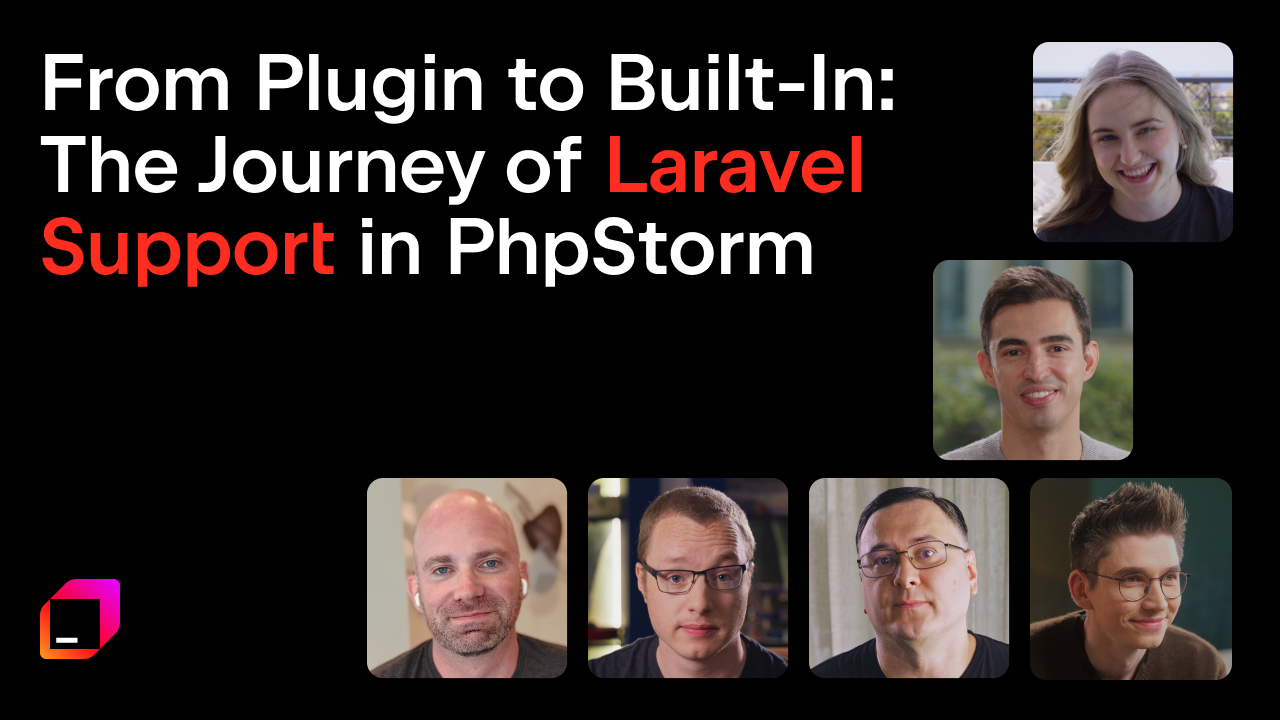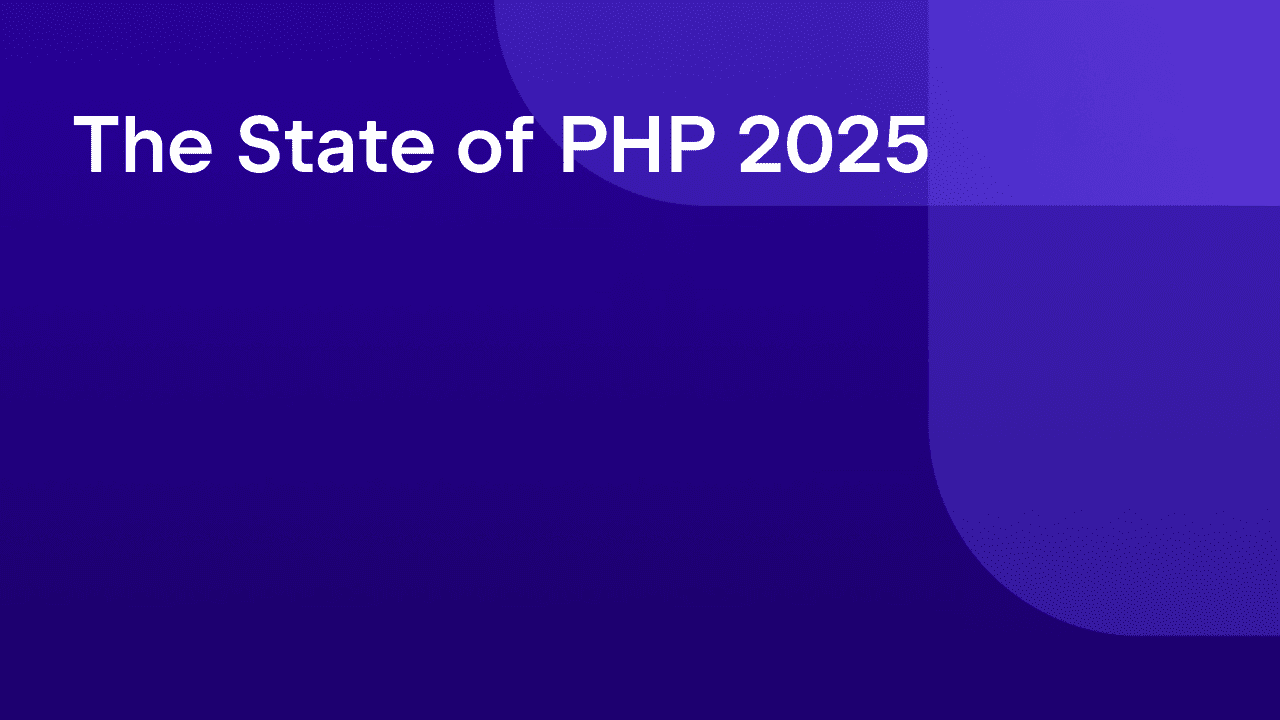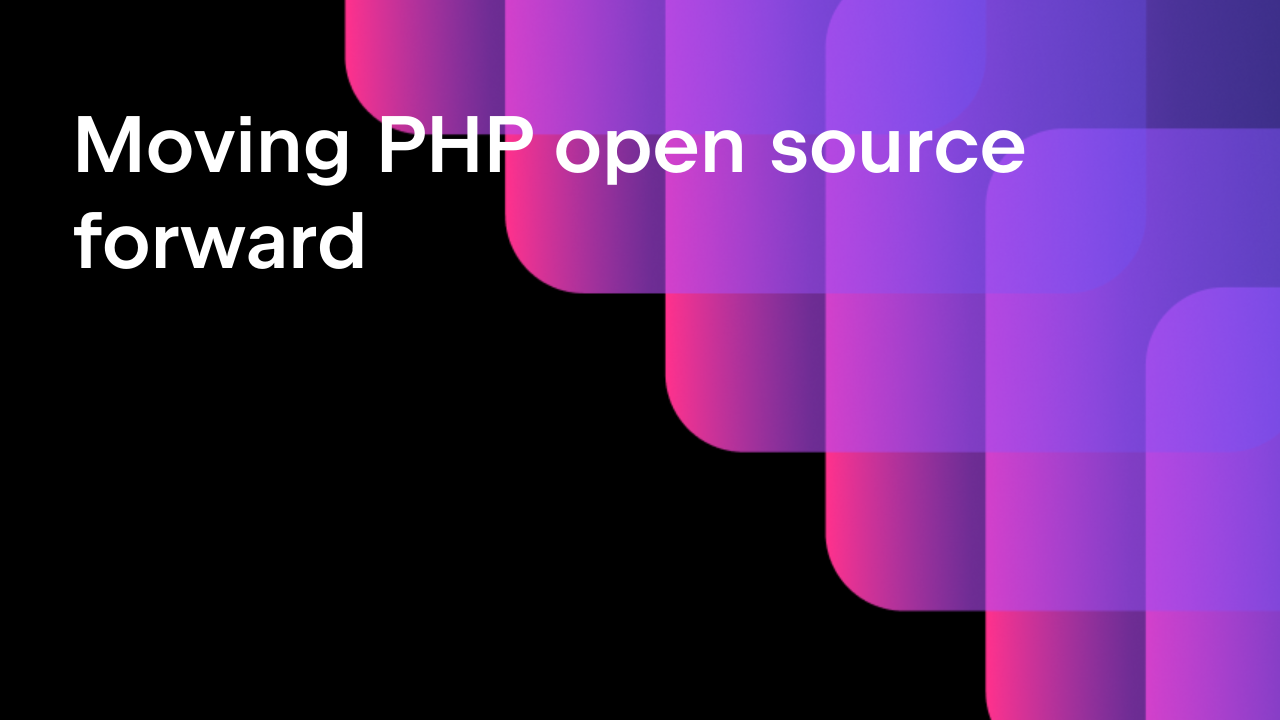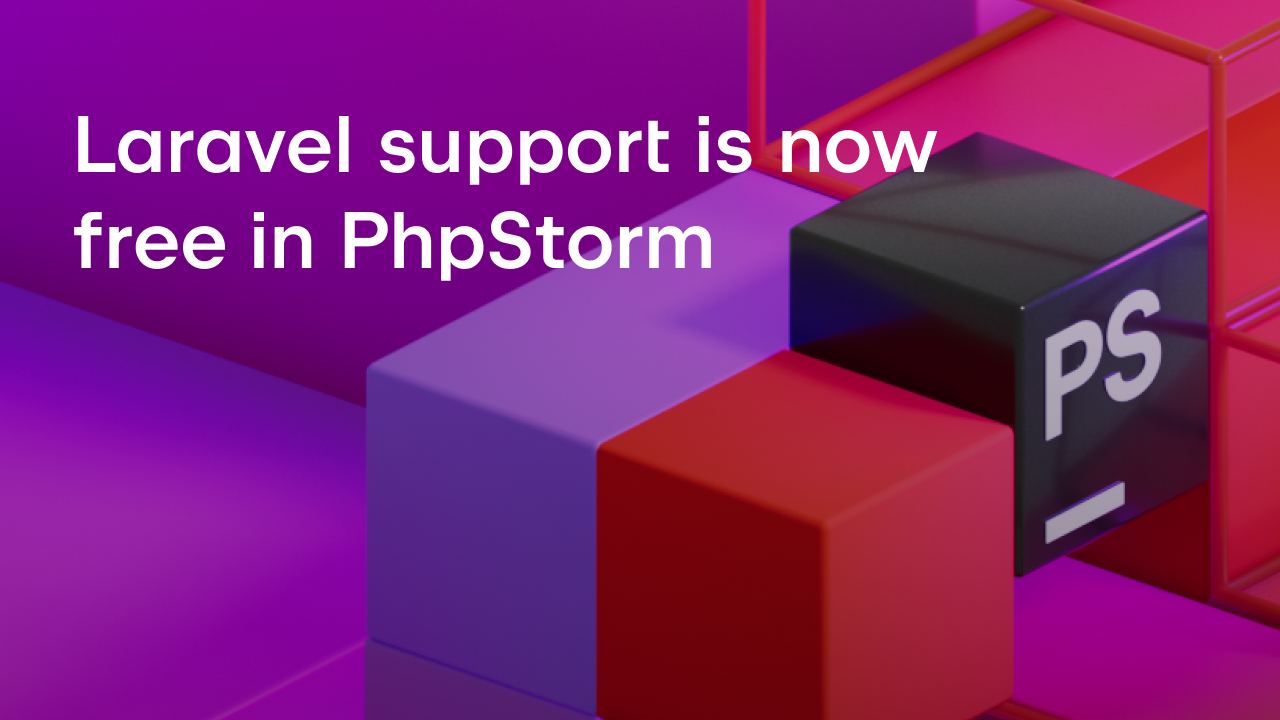Laravel Trends 2024: The Latest Market Insights
As we move through 2024, Laravel continues to solidify its position as one of the most popular PHP frameworks, powering a multitude of web applications across the globe. In this blog post, we’ll analyze the recently published State of Laravel 2024 survey results, highlighting key takeaways and what they mean for developers, companies, and the broader PHP community.
This year’s survey saw participation from 4,090 respondents across all continents (excluding Antarctica), with the majority hailing from Europe and Asia (49.8% and 20.15%, respectively). Notably, most respondents are experienced developers with 10–20 years of overall experience and 5–10 years of experience with Laravel.
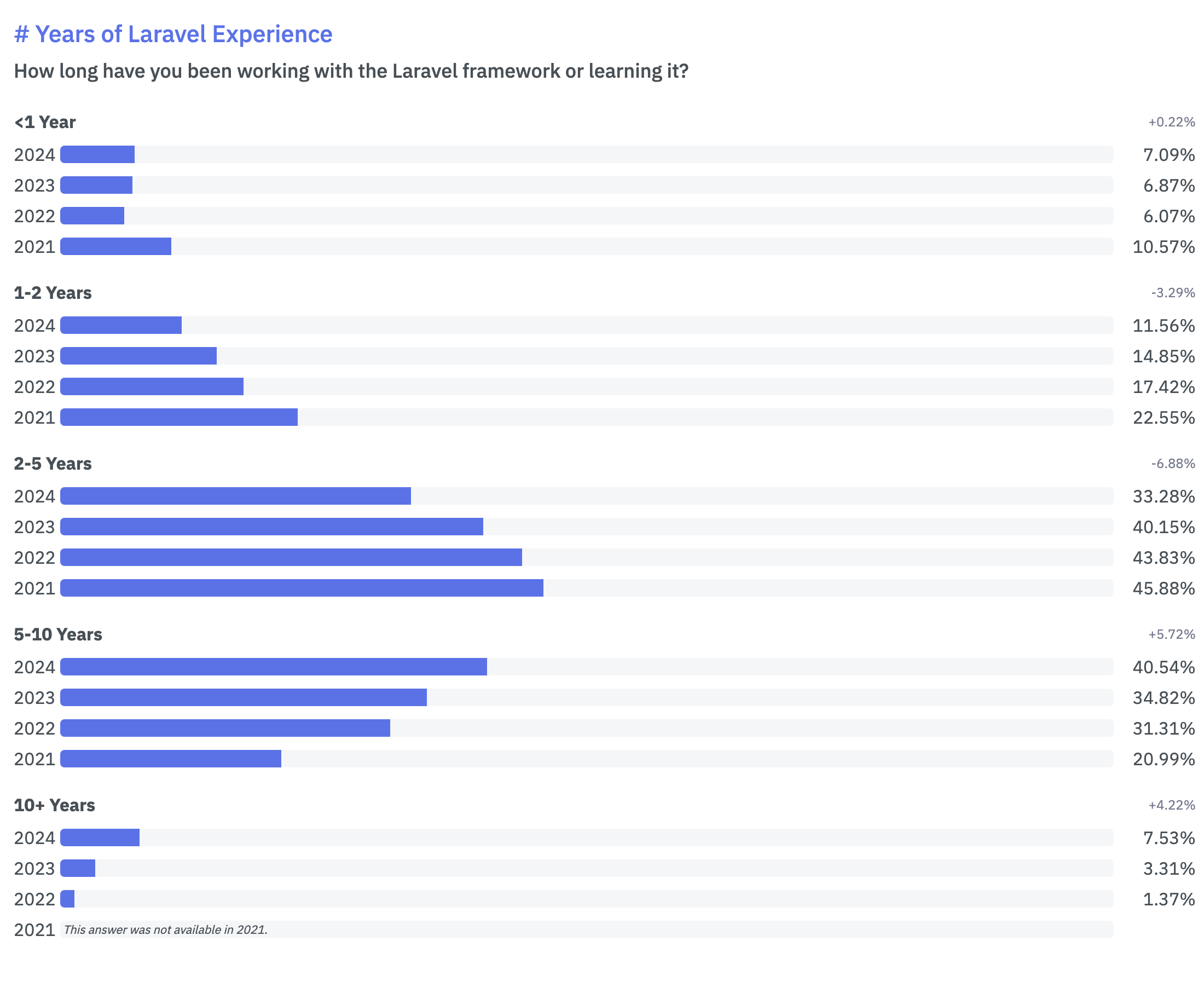
The growing popularity of Laravel
Laravel’s appeal has only grown over the years, as evidenced by the recent JetBrains Developer Ecosystem Survey. According to this survey, Laravel remains the most popular PHP framework, with a significant number of developers reporting they use it regularly in their projects.
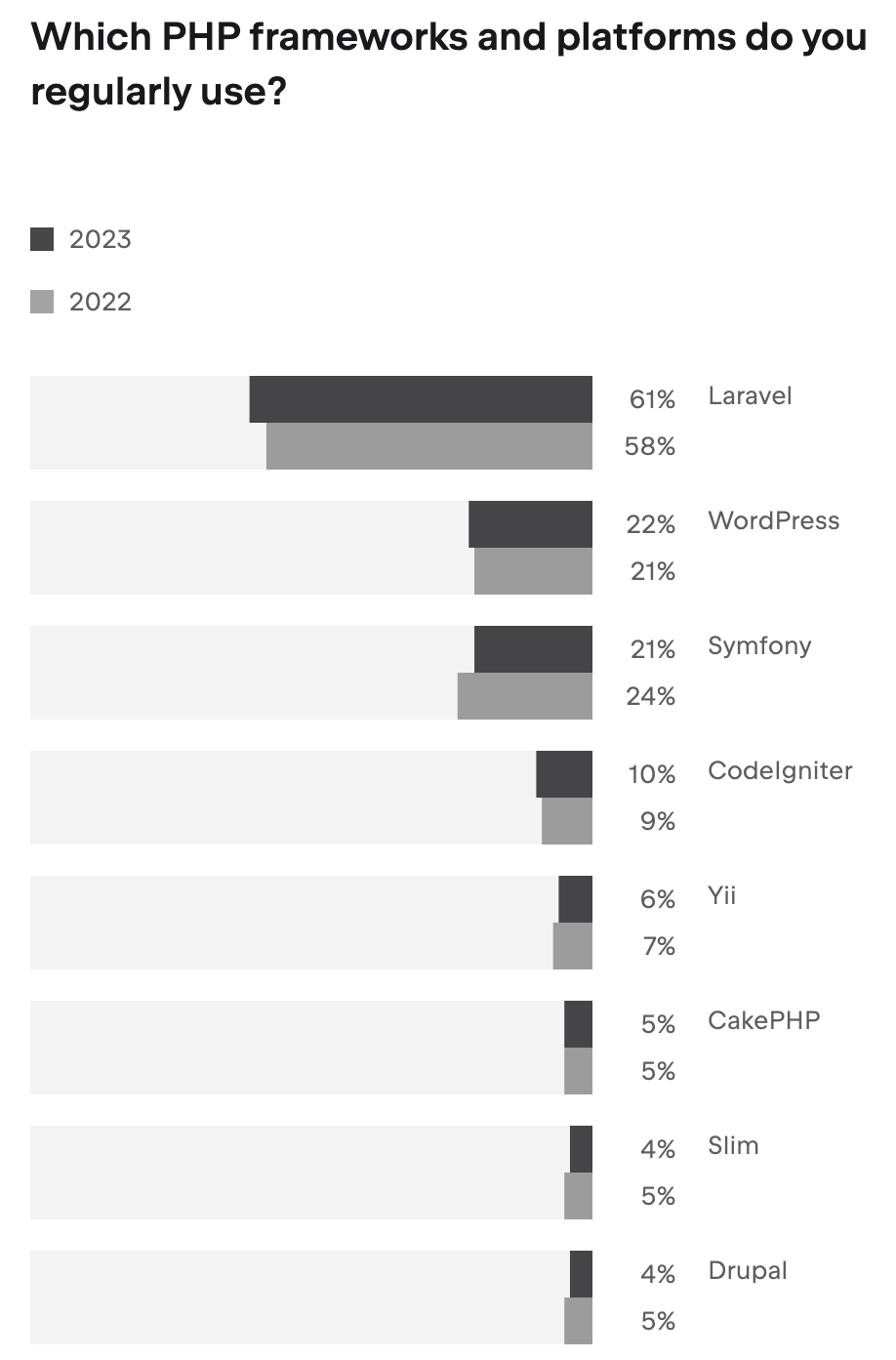
Top primary code editors
A notable result of the State of Laravel survey pertains to the preferred primary code editors among Laravel developers. PhpStorm has been the most popular choice for ages, and in this iteration of the survey it was favored by 54.01% of respondents. This IDE, enhanced by the Laravel Idea plugin, offers a comprehensive feature set specifically tailored for Laravel development.
Following PhpStorm, Visual Studio Code (VS Code) is the editor of choice for 40.24% of respondents, while Sublime Text ranks third with 2.18% of responses.
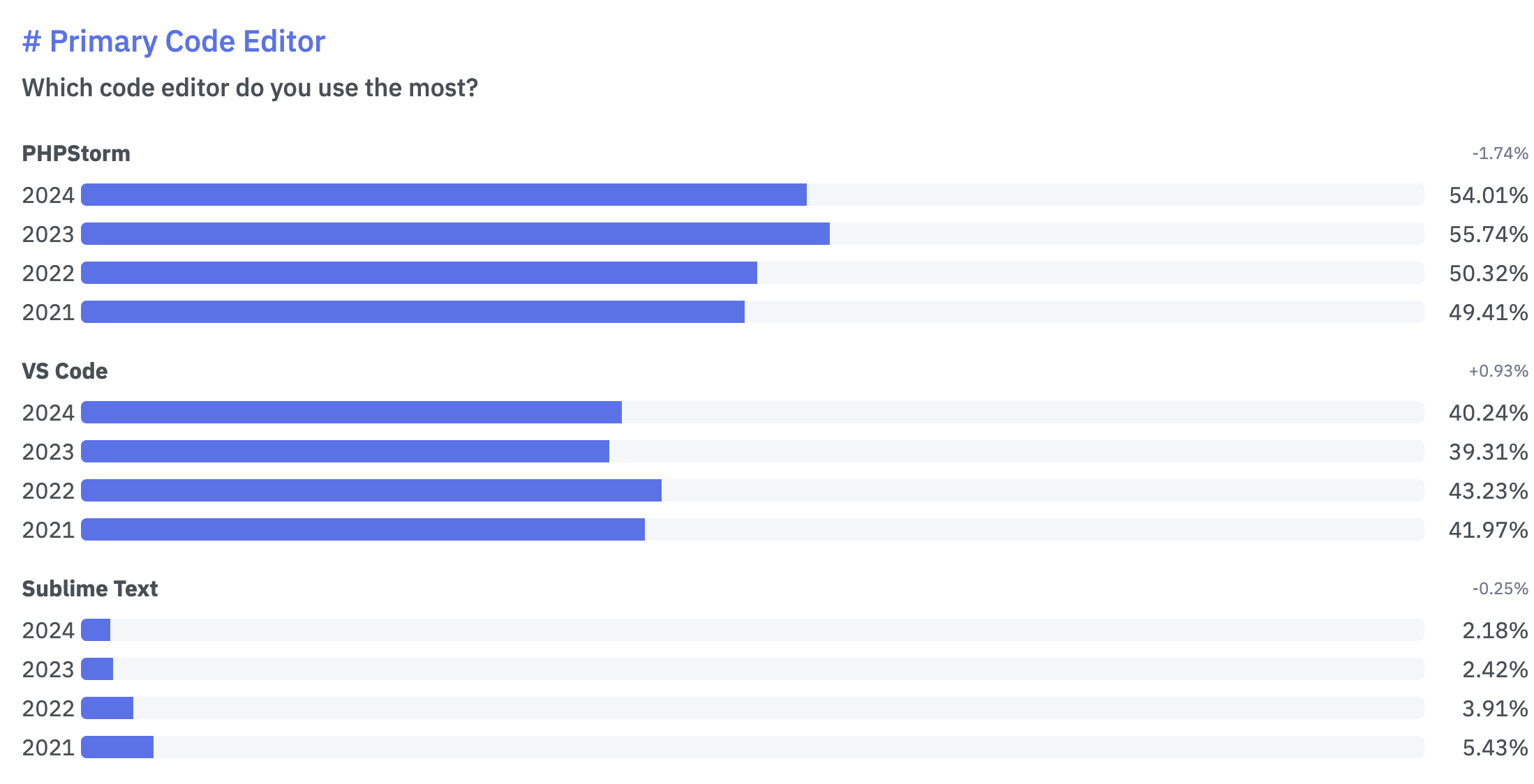
Laravel versions and use cases
One key trend in the results is the widespread adoption of newer Laravel versions. With the recent release of Laravel 11, many developers are eager to upgrade their projects to leverage the latest improvements and features. However, the results also indicate that a significant number of projects are still running on Laravel 9 and 10. This suggests that while the community is enthusiastic about new versions, the migration process can be challenging, particularly for larger or more complex applications.
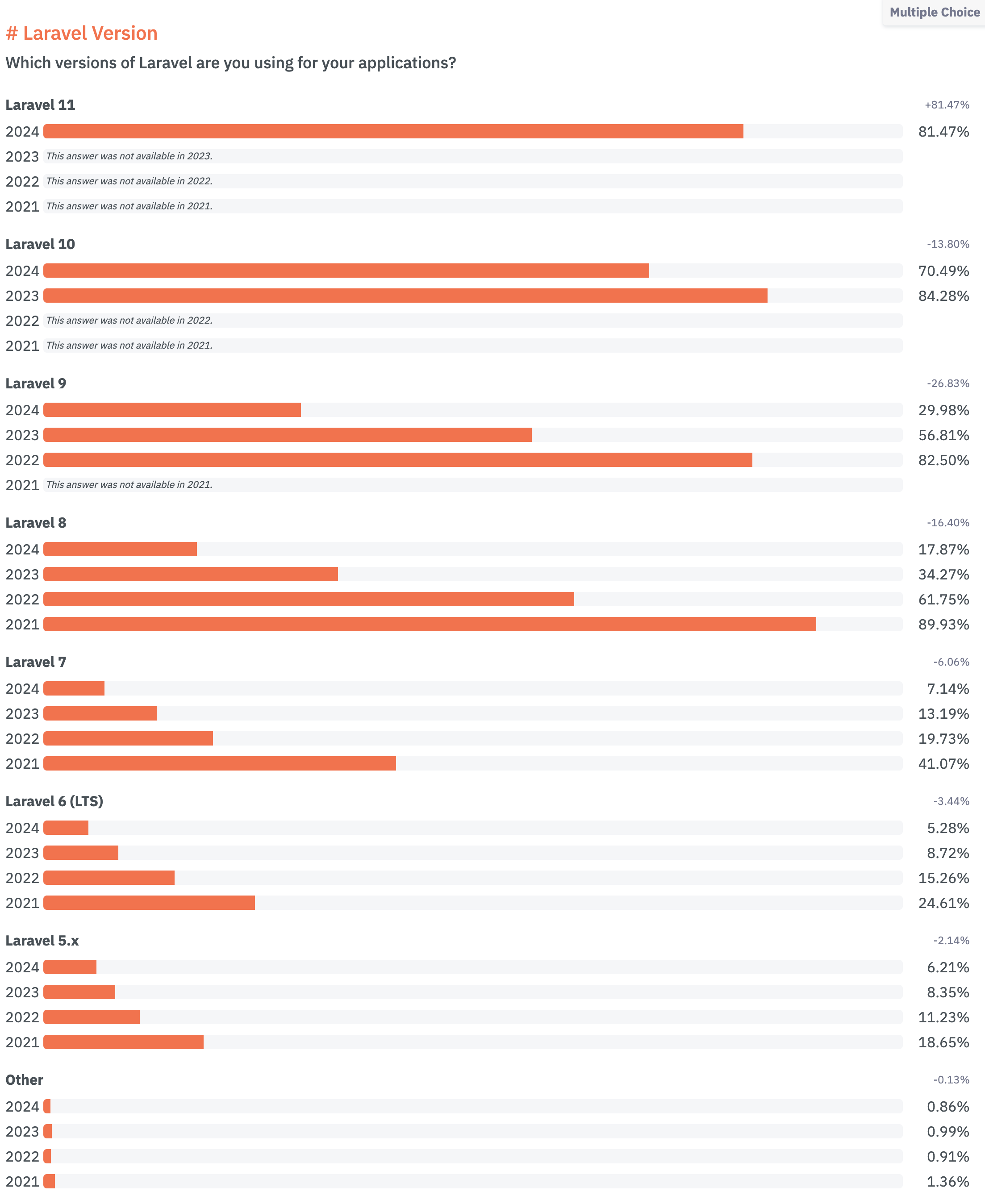
The results also provide valuable insights into the application contexts where Laravel is most commonly used. Almost all respondents (95.40%) reported using Laravel for business applications, while 57.90% use it for hobby projects.
PHP version preferences
From the survey results, it is evident that there is a strong preference among Laravel developers for using the latest PHP version. This trend is not surprising given the new features introduced in PHP 8.3, such as readonly clones, the #[Override] attribute, and the json_validate function.
Debugging approaches
It is also interesting to look at the approaches developers take to debugging within Laravel. According to the survey results, most developers (89.63%) rely heavily on traditional debugging techniques such as using the dd() and dump() functions.
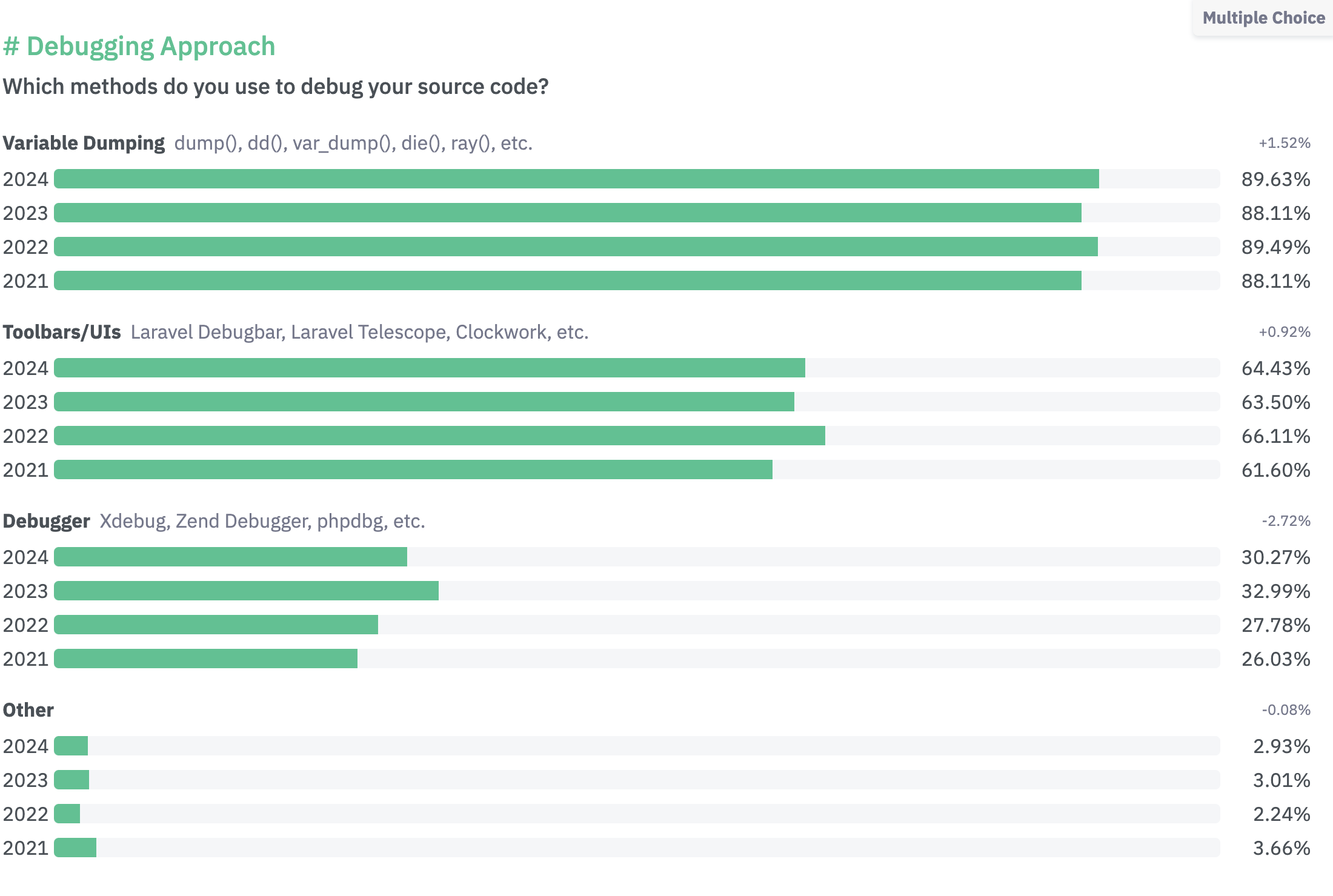
“It’s interesting that the majority of PHP and Laravel developers still prefer var_dump equivalents over a debugger. My experience, and that of many developers, is that there’s still too much friction in setting up and toggling Xdebug on a day-by-day basis. I hope PhpStorm will be able to remove some, if not all, of that friction in the near future, as we’re working on improved Xdebug support.”
Check out Brent’s reflections on the 2024 State of Laravel results in his latest video stream:
Integrations and the expanding Laravel ecosystem
Laravel’s ability to integrate seamlessly with other technologies is another reason for its growing popularity. The survey results show that many Laravel projects are built with a wide range of integrations, from APIs and third-party services to complex database architectures.
In particular, Laravel’s own tools for the ecosystem like Laravel Forge (for server management), Laravel Vapor (for serverless deployment on AWS), and Laravel Nova (an administration panel for Laravel applications) are gaining traction. These tools simplify many aspects of development, deployment, and maintenance, allowing developers to focus more on coding and less on infrastructure management.
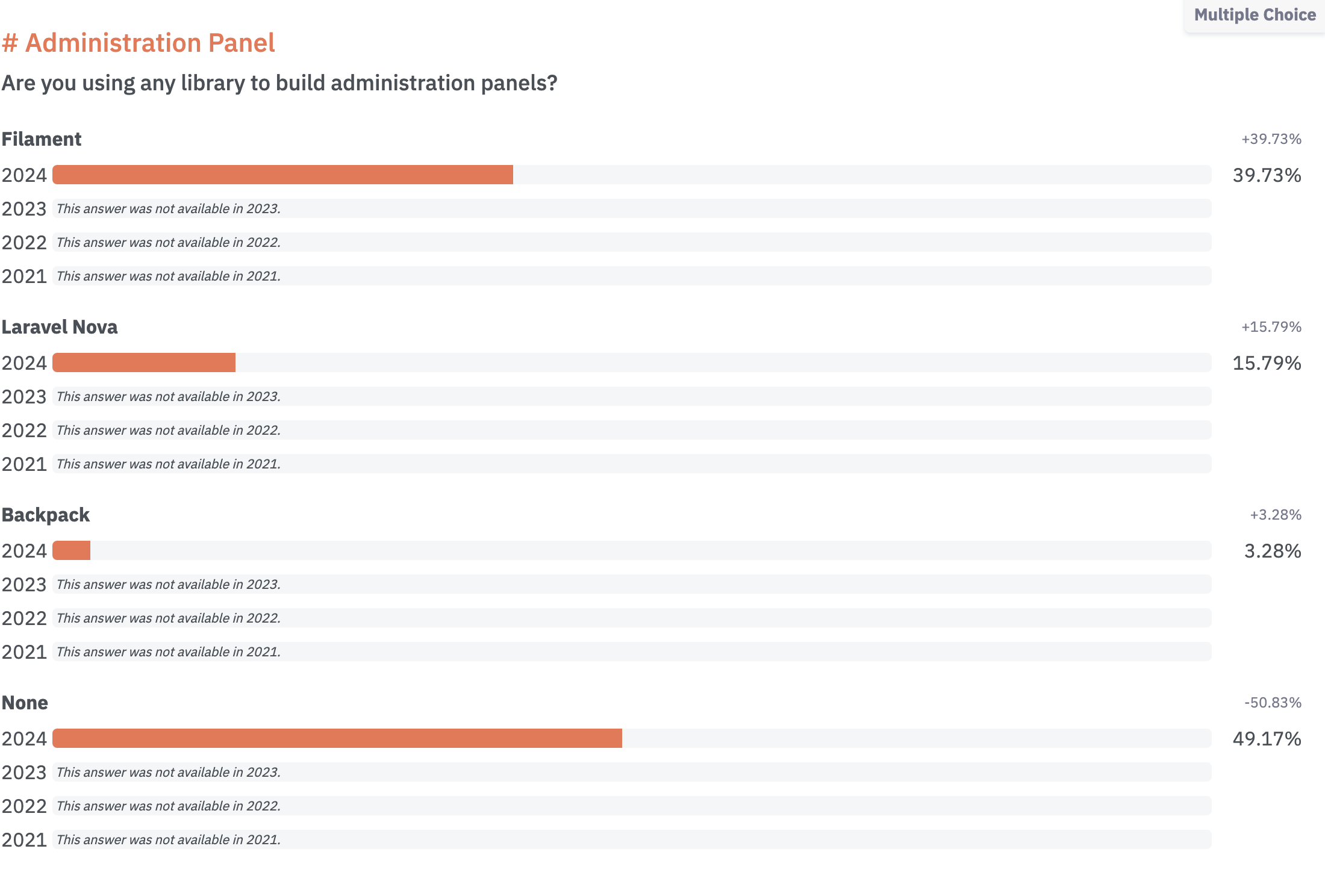
The future of Laravel
Looking ahead, the survey results indicate a promising future for Laravel. The framework’s maintainers consistently deliver regular updates and introduce new features to keep Laravel at the cutting edge of PHP development. For the latest on these updates, including new features and improvements, you can explore the detailed Laravel Release Notes.
The Laravel community is also incredibly active, with numerous online courses, YouTube videos, and vibrant forums, as well as a wealth of resources tailored to various learning preferences. For a comprehensive compilation of resources and tutorials to support your journey, check out Laracasts, a platform offering high-quality video tutorials and courses on Laravel and other web development topics, designed to help developers of all skill levels enhance their knowledge and skills.
Conclusion
The State of Laravel survey results offer a comprehensive snapshot of the current trends and challenges within the Laravel ecosystem. For developers and companies working with Laravel, it is essential to stay informed about these trends and adapt accordingly. By leveraging the insights from this survey and staying active in the Laravel community, you can ensure that your projects remain at the forefront of web development in 2024 and beyond.
Subscribe to PhpStorm Blog updates


